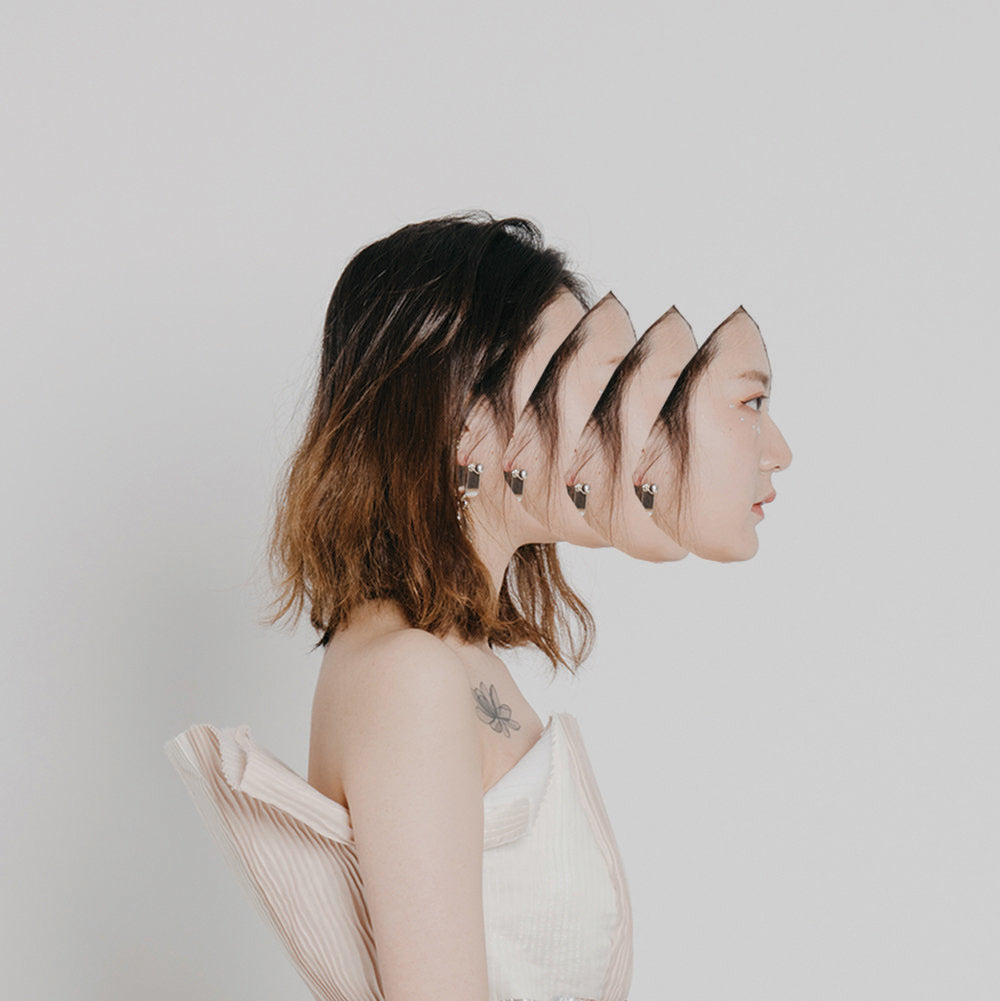
Sherly Fan
multimedia artist
Fan is a multi-media artist and filmmaker whose work is a dynamic exploration of innovative storytelling and multidisciplinary research, driven by a profound appreciation for identity exploration and expression. Embracing the challenges of technological advancements and urges for diversity and inclusion, her work, rooted in a background in fashion and Experimental Documentary, spans mediums from film to VR/AR/AI technologies and performance art.
ARTWORKS
-

-
CAN YOU TAKE THIS SERIOUSLY
CAN YOU TAKE THIS SERIOUSLY (CYTTS)is a multi–media interactive exhibition & an experimental short film featuring a collection of work focused on “Sherly” as an artistic character. This character embodies an imaginative child–like narrative style and nostalgic cute aesthetics to explore subject matters including gender representation, generational confusion, and the exploration of self–identity.
-
Reflective
Reflective, originated from an Immersive VR project, is a computational art installation on self-identity reflection. It invites viewers to peer into a wry maze room covered in moving paint strokes and discovers their own bodies covered in mirrors that allegorically depicts one’s mental state.
-

-
Social Dystopia- Poor Unfortunate Instagram Souls
Social Media Dystopiais a series of short videos that reference Disney animation villains, exploring the profound changes humans have undergone with the rise of digital imaging technology and social media.
-
This video features Ursula from "The Little Mermaid," drawing on her theme song, "Poor Unfortunate Souls." The song critiques the fragmented information and identity obsession that dominate today's social media landscape. Viewers are shown how deeply we've allowed social media to reshape our identities, using AI-generated voices to underline our metaphorical pact with technology.
-
Cloud Over
Bus stop (Stop ID: 5480) near the Duke Garden at Flower Dr is the station for bus route number 6. This route is one of the only Durham city bus routes that go through the Duke campus. The difference between Durham buses and Duke buses, as well as the difference between the traffic of these bus stations, are something worth paying attention to. The strain that is held on the imaginary border of the Duke campus and the real environment and residents of Durham filters the population and isolates Duke T-shirt-wearing students and those who do not belong. This AR project uses a metaphoric cloud analogy to indicate the inexplicable separation between the Duke campus and the city of Durham.
-
The location of the bus stop itself also marks a geographical separation between the concentrated and concrete campus and the fantastical garden with wide-open space. In contrast to the highly artifactual campus and garden, this station in between is less taken care of. There is no clear sign for the bus stop, and it is surrounded by unorganized plants. In this case, the bus station not only physically separates the campus and the garden, but it also separates itself from the highly manipulated academic narration, which is also a parallel between the Duke buses and the city buses.
Cloud Overuses AR technology to cast out the “invisible cloud” that is above our heads. The animation of light and dark clouds separating from one unified cloud the user experience directly points to the inexplicable racial separation between the campus and the city. The shape of the cloud is intentionally chosen to be formed by hardened edges polygons rather than soft and smooth textures that are naturally been observed in the cloud. This choice is to emphasize the structural roots of this separation. This project also contains an audio element. It features a recording of a stumbling speaking experience, which highlights the inexplicable façade of the issue and implies the challenging non-spoken status quo.
-
CAN YOU PUT ON MY HEAD
CAN YOU PUT ON MY HEAD is a performance and interactive art project by artist Sherly Fan. It features a paper mache head sculpture, a globe with multiple faces drawn by the artist while wearing it on her head. This piece explores the complex relationship between self-perception and external interpretation. Audience members are invited to wear the sculpture, experiencing what it feels like to be 'blindly' passive and judged. The experience is intensified by audio of the artist’s stuttered voice and whispered microaggressions, emphasizing feelings of being unseen and unheard. This project, rooted in personal experience, also opens conversations on microaggression and multi-perspective experiences.
The project is presented as an interactive art event with the head sculpture as well as portrait photos after the event. -

-
CAN YOU SEE MY FACE
CAN YOU SEE MY FACE is a performance art piece commenting on one’s journey of unveiling their identity. I put layers of brown paper bags, and blindly draw my own face on each. The layers symbolize the complexity of self-perception. With deliberate unveiling, I peel off each layer, exposing the evolving self-portrait beneath.
-
The final act involves heavy breathing into the bags I peeled—a symbolic gesture of anxiety upon self-scrutinization. This raw and authentic exploration invites reflection on the masks we wear, the layers we hide behind, and the empowering journey of self-discovery.










